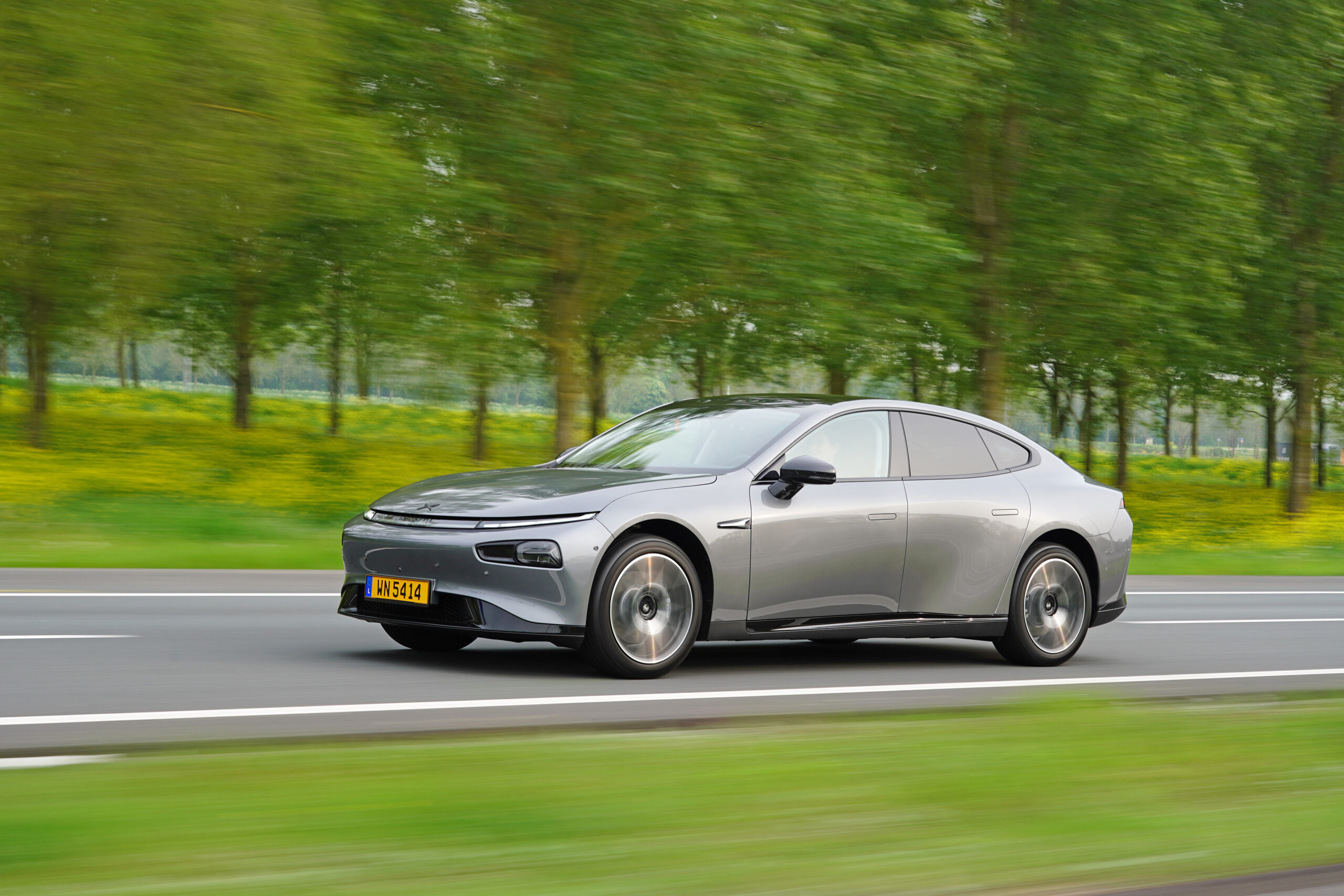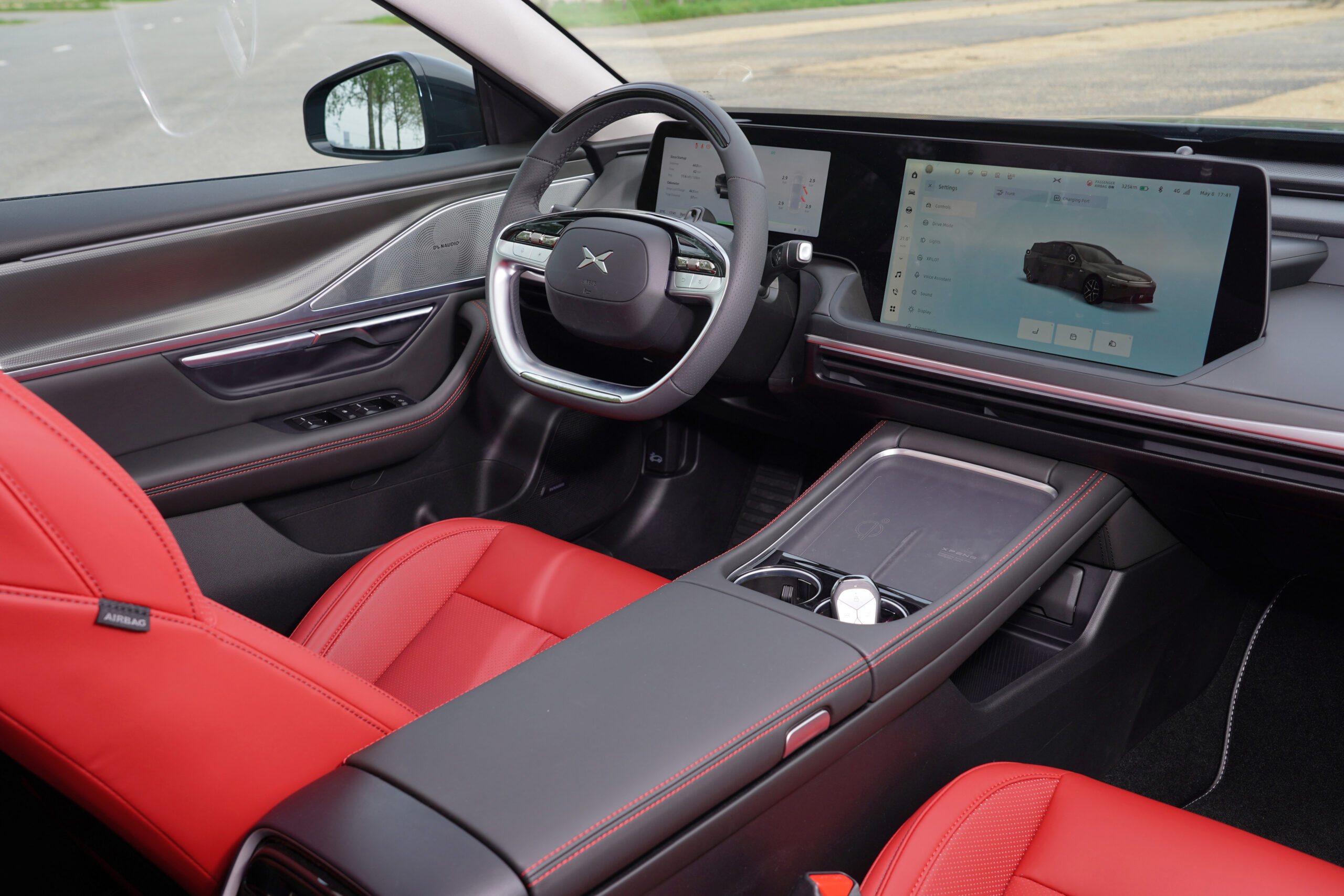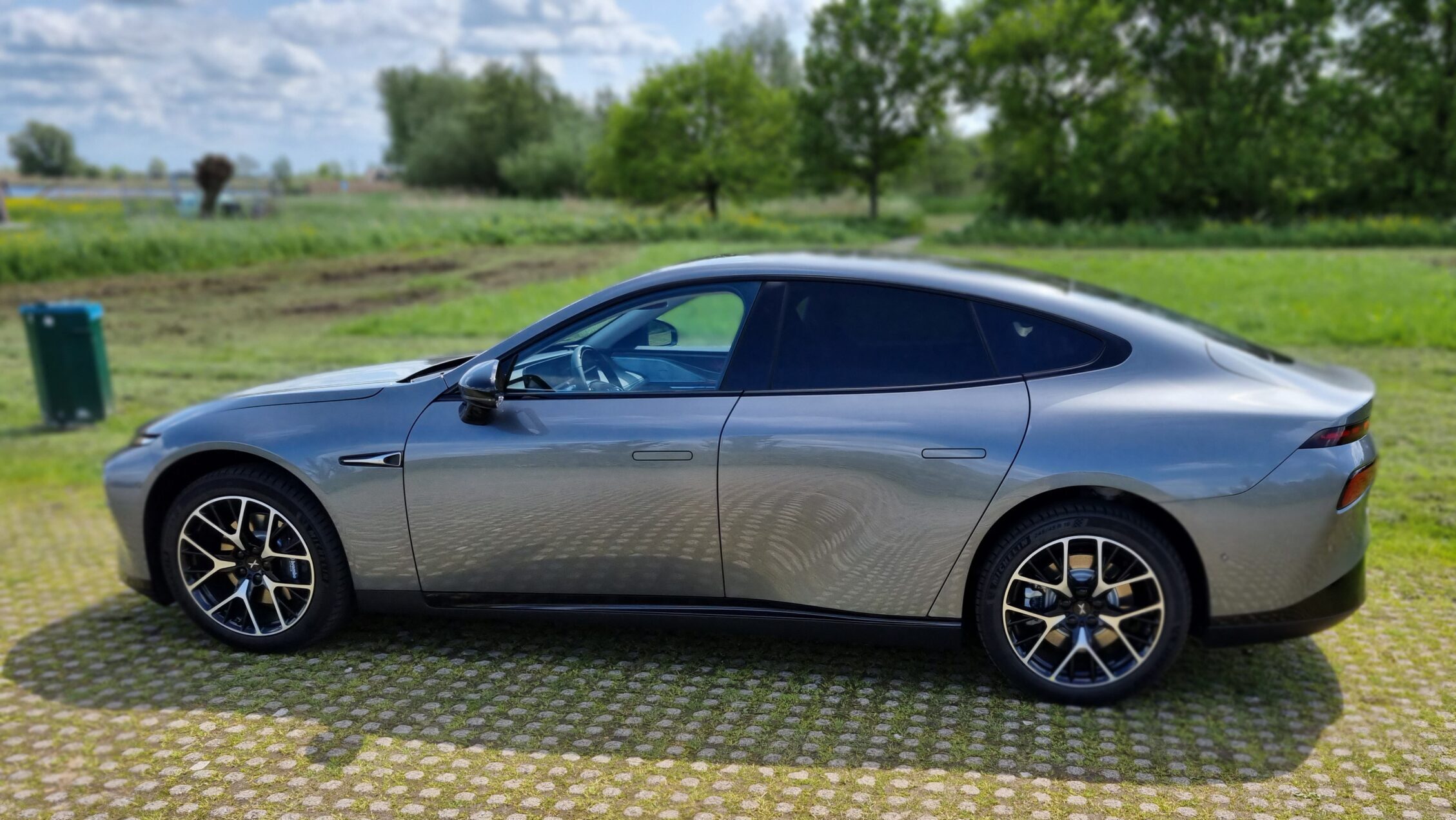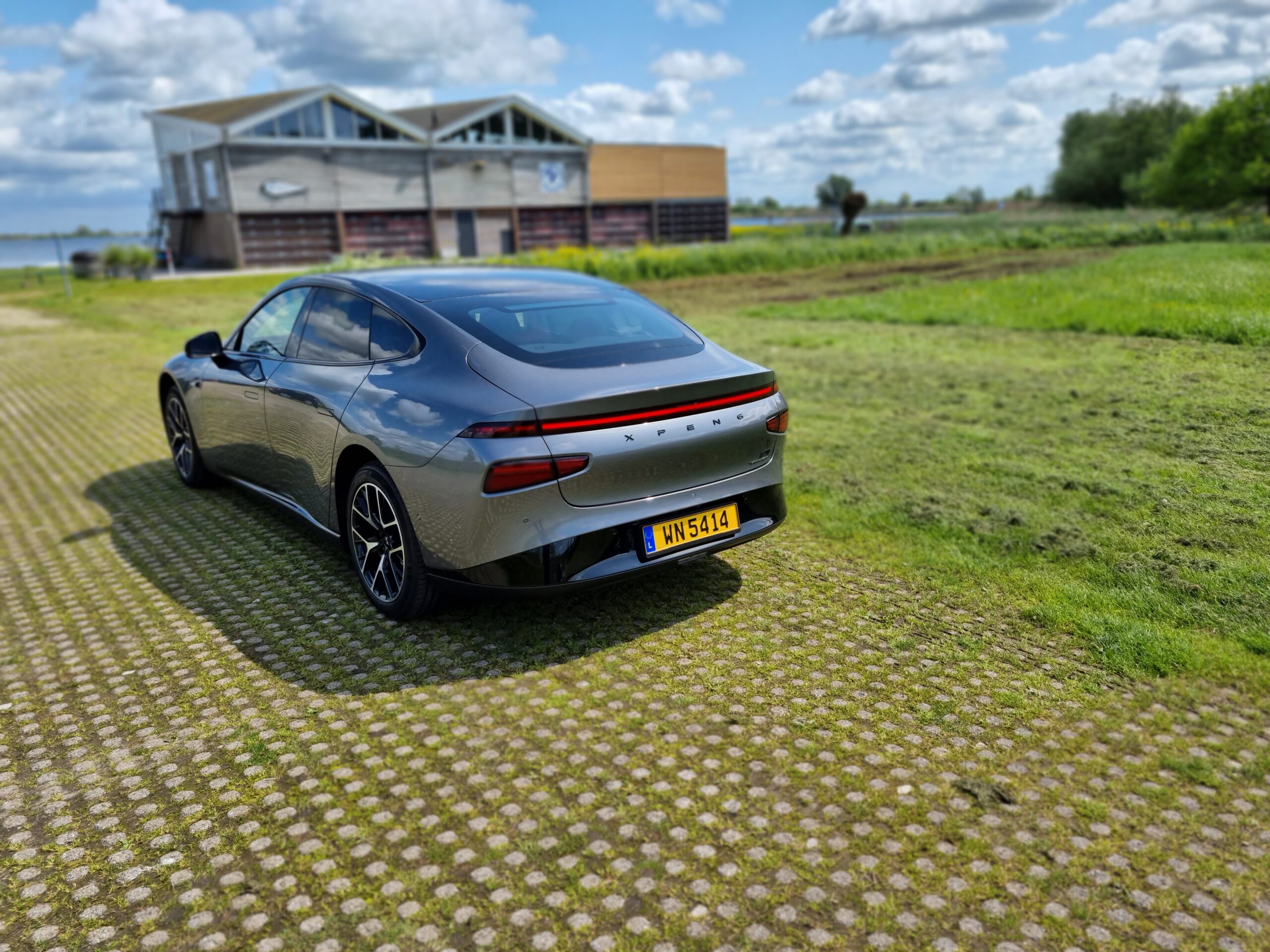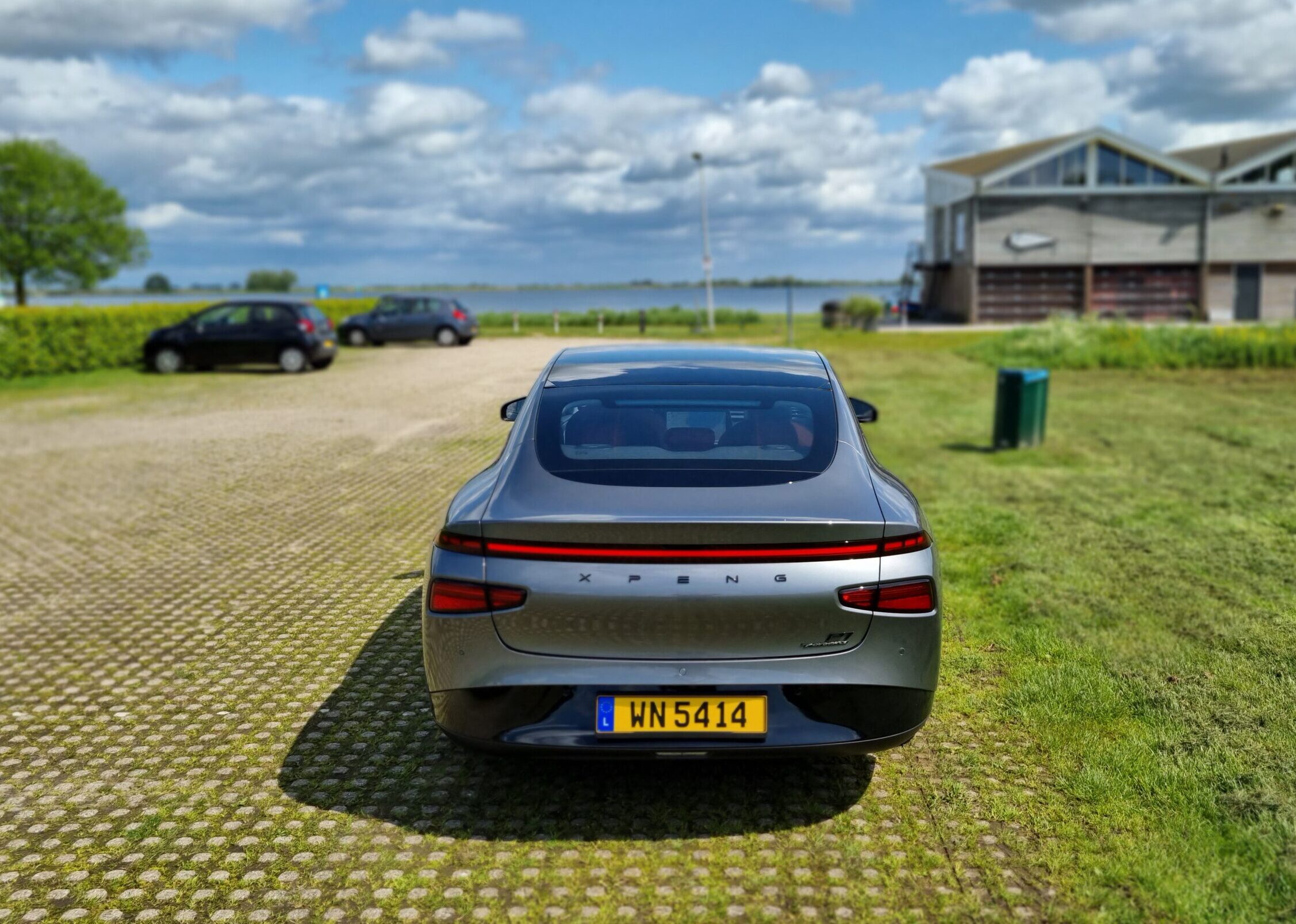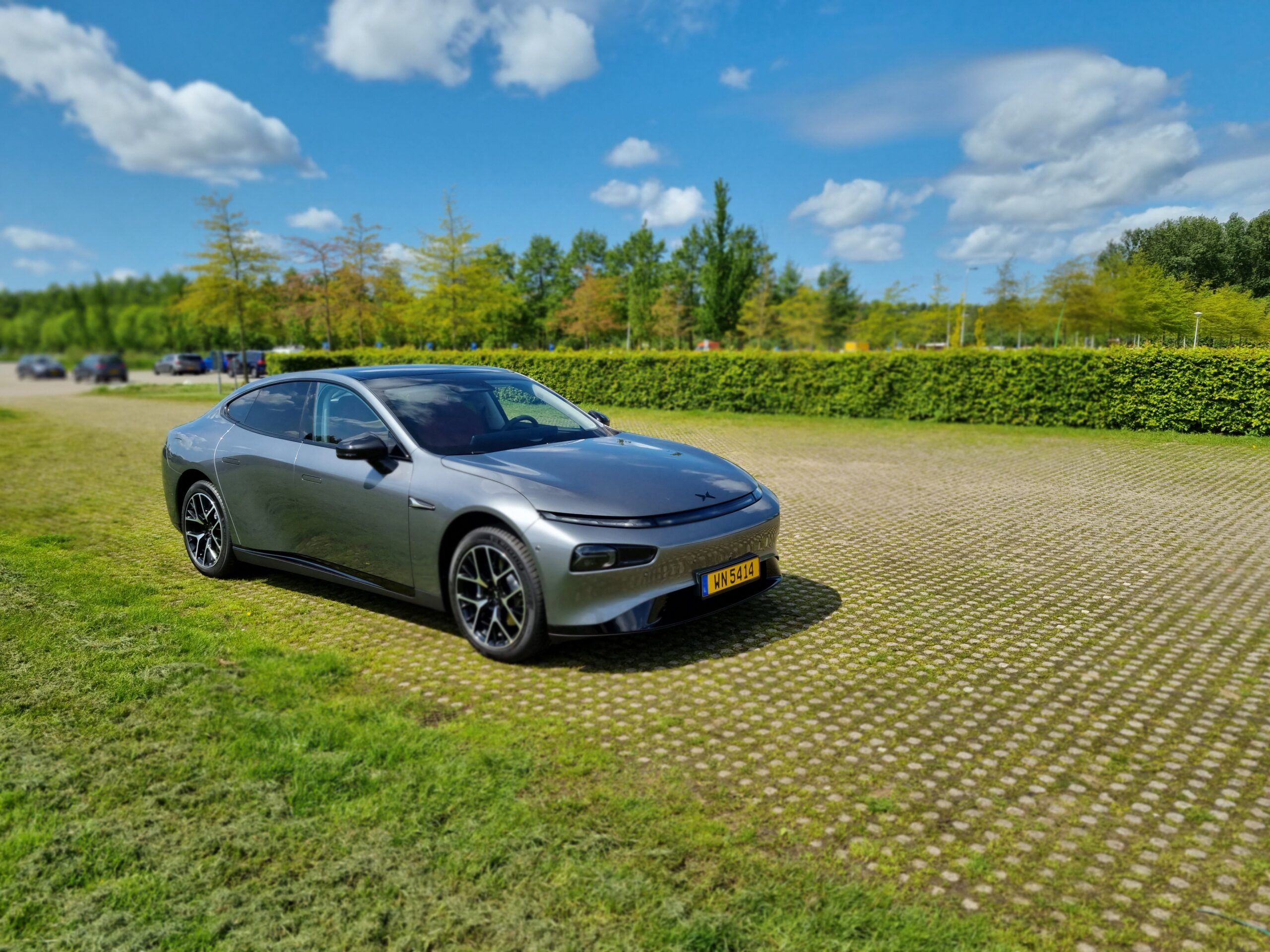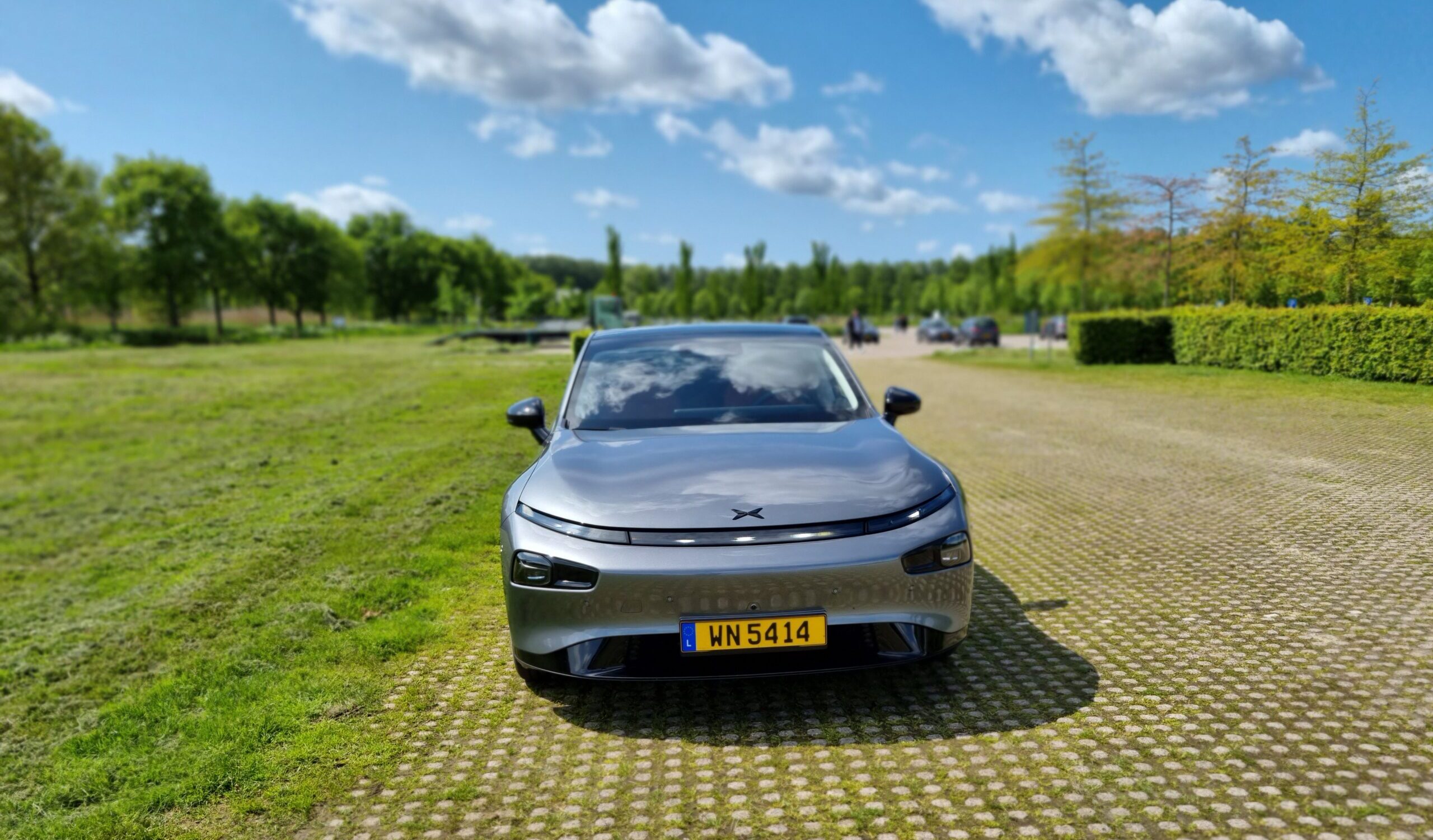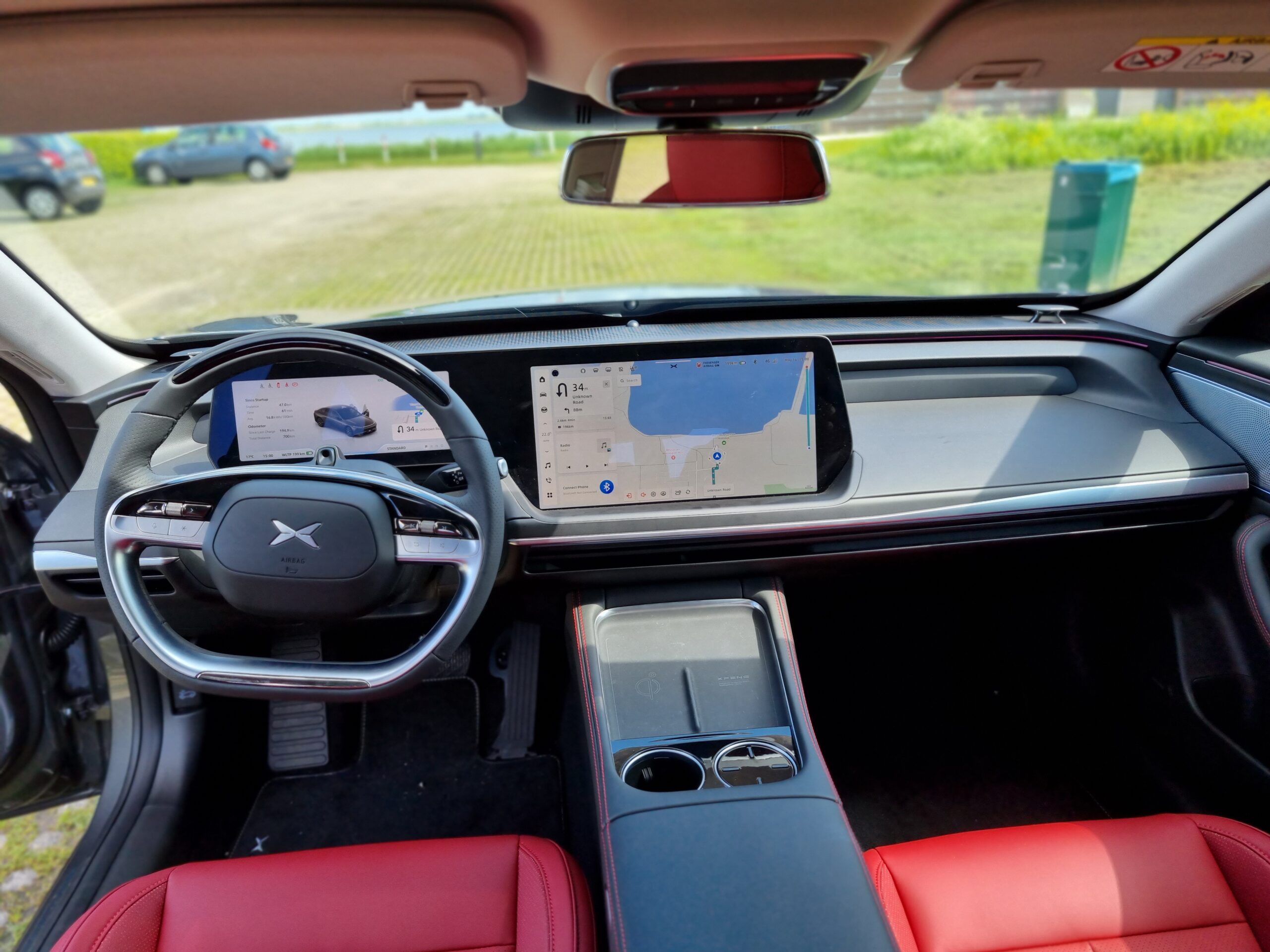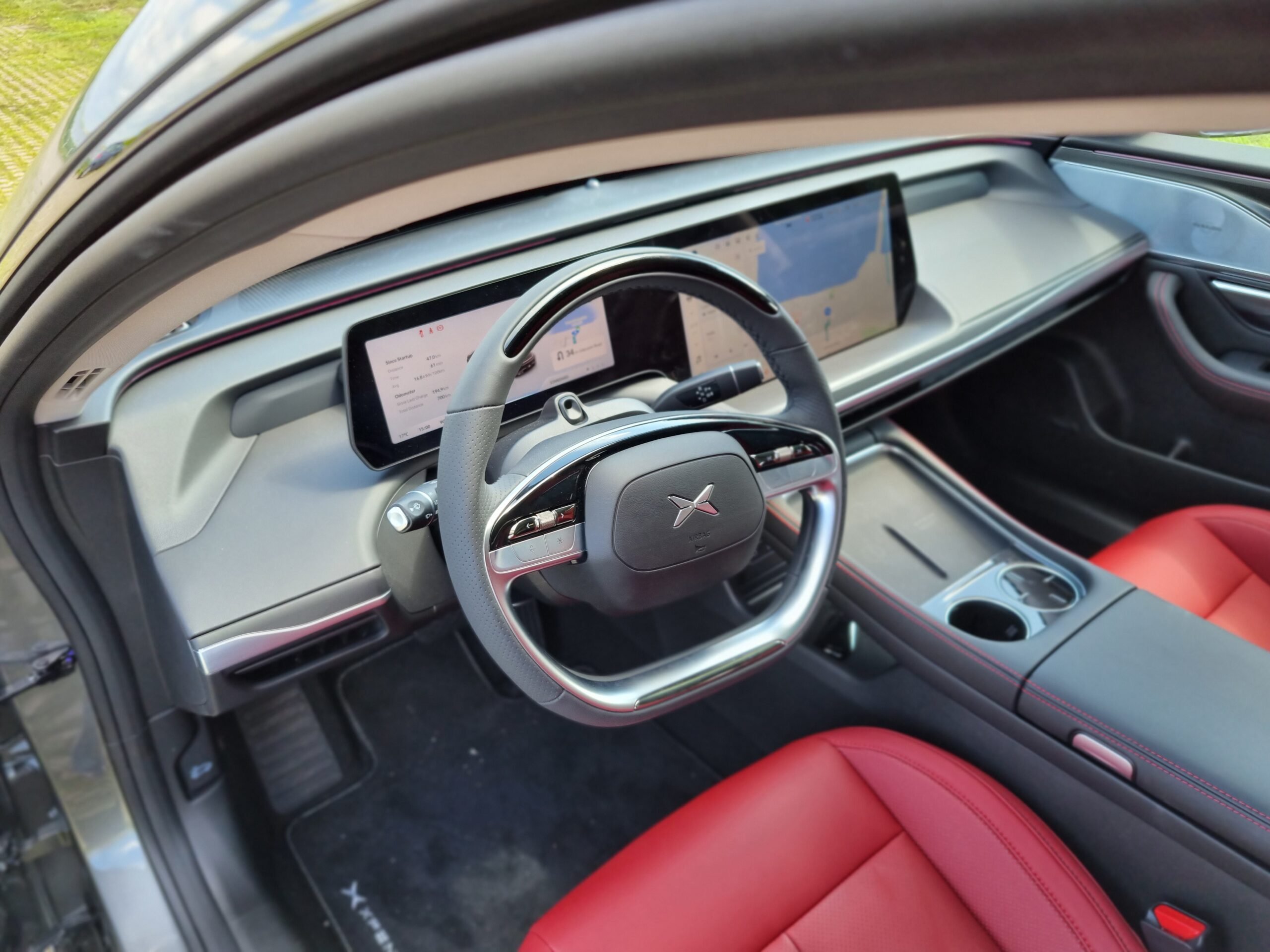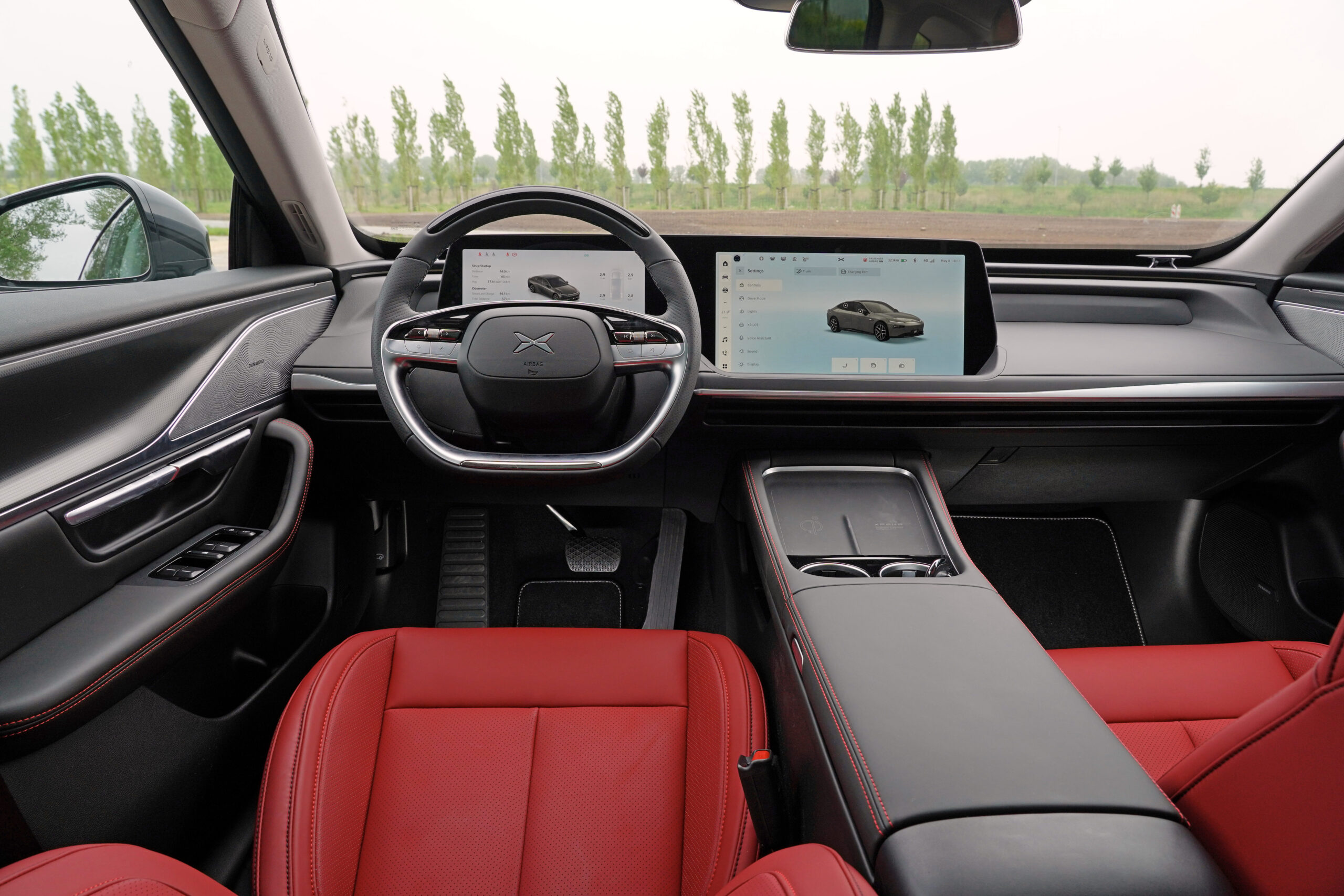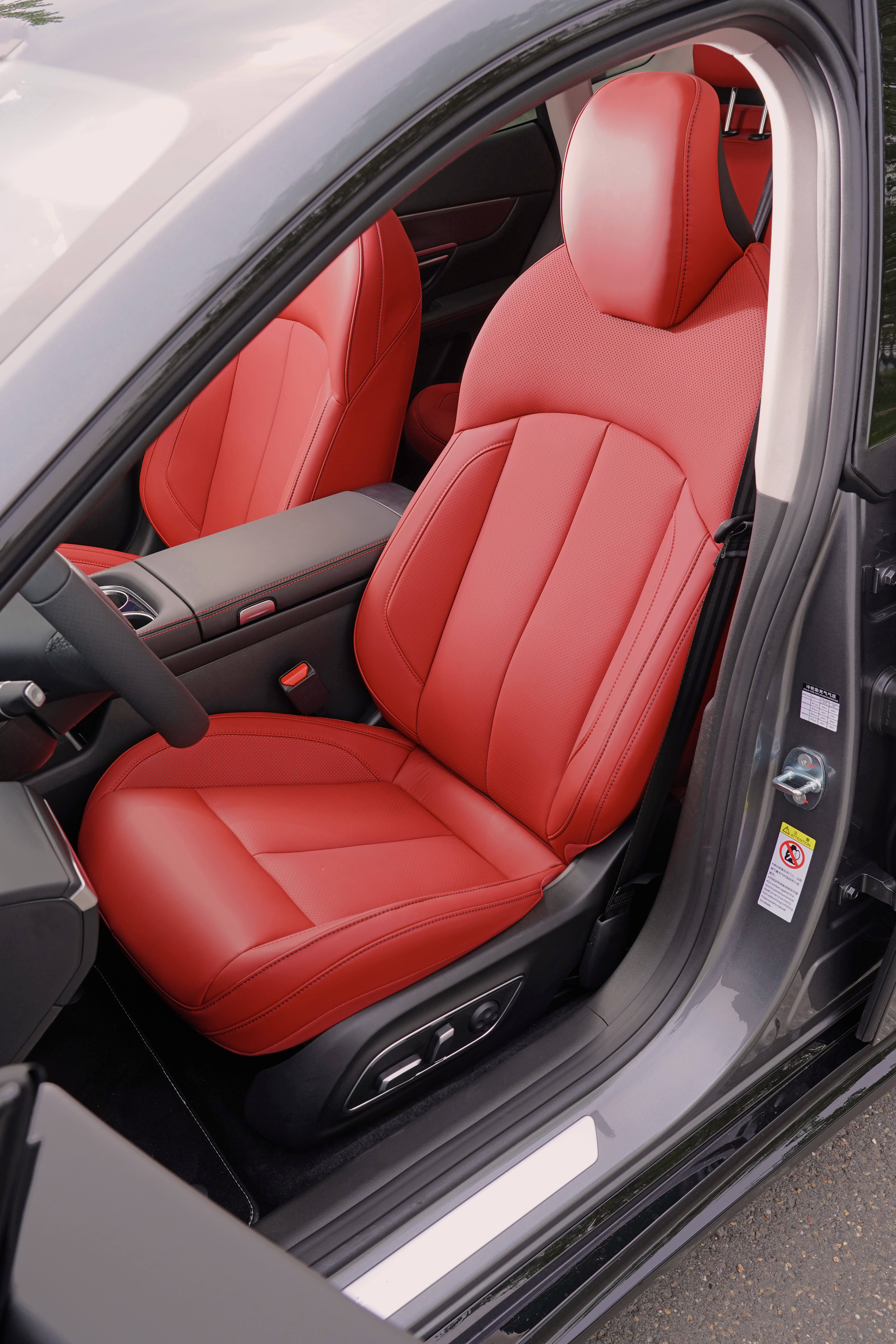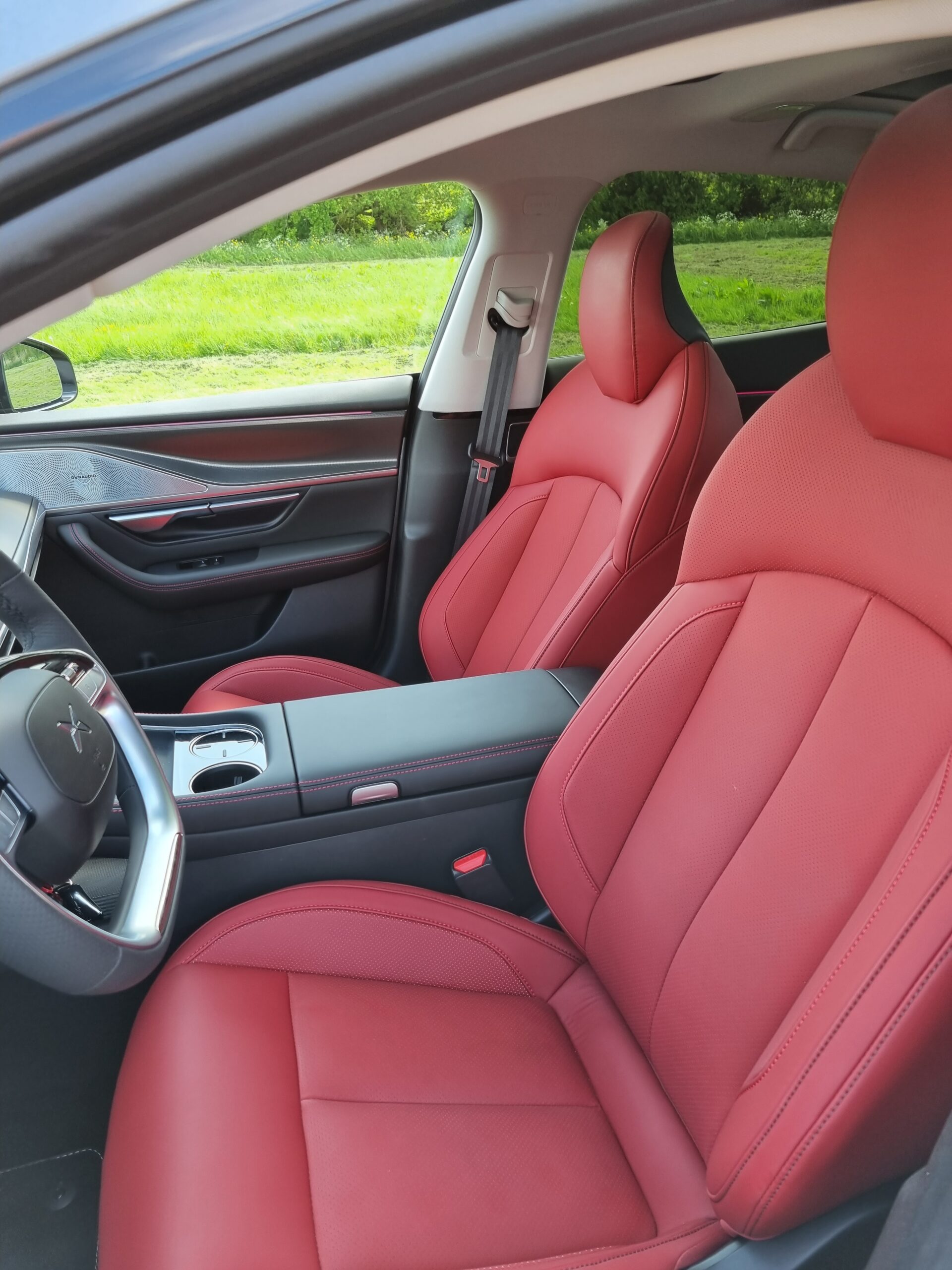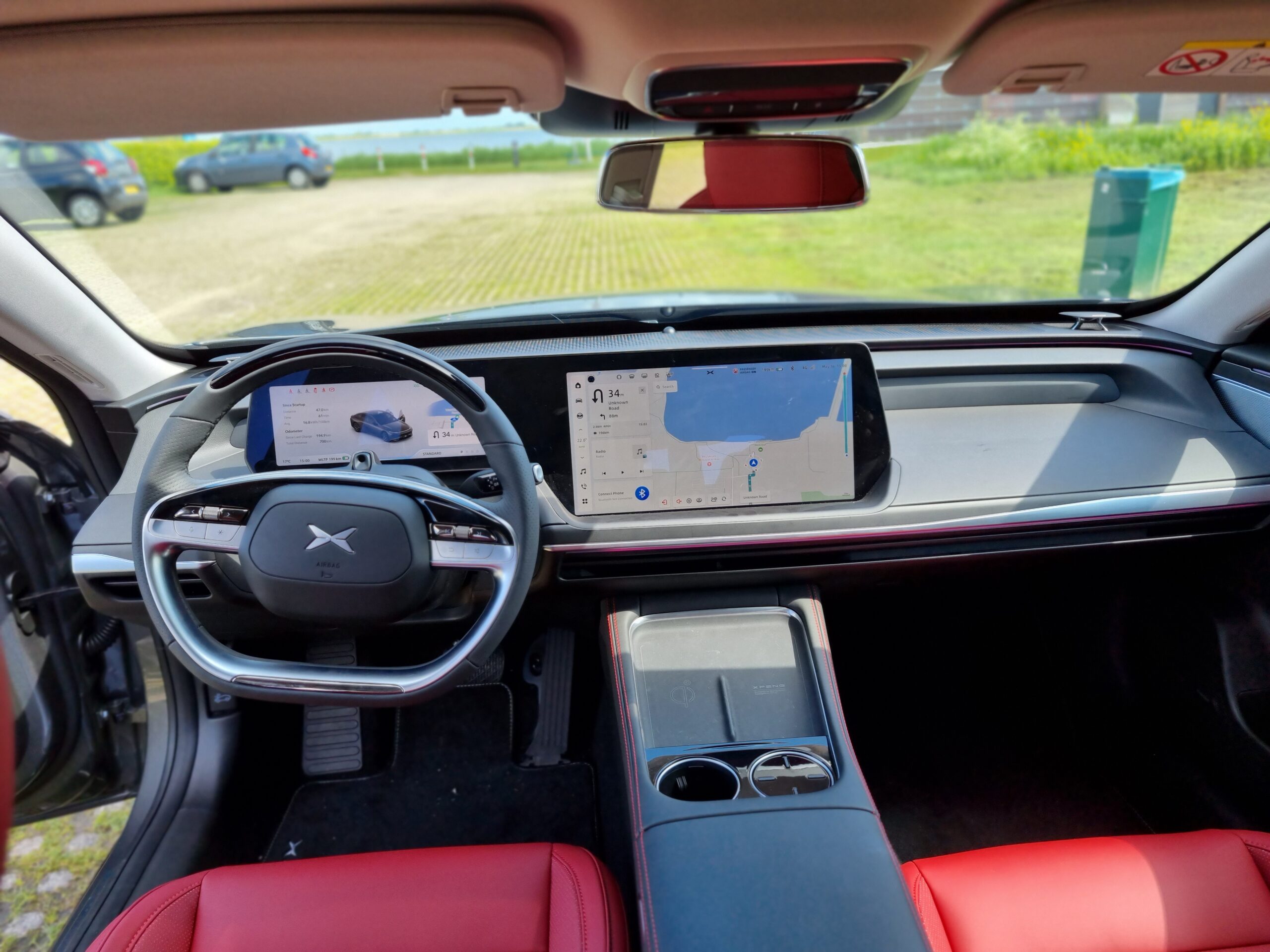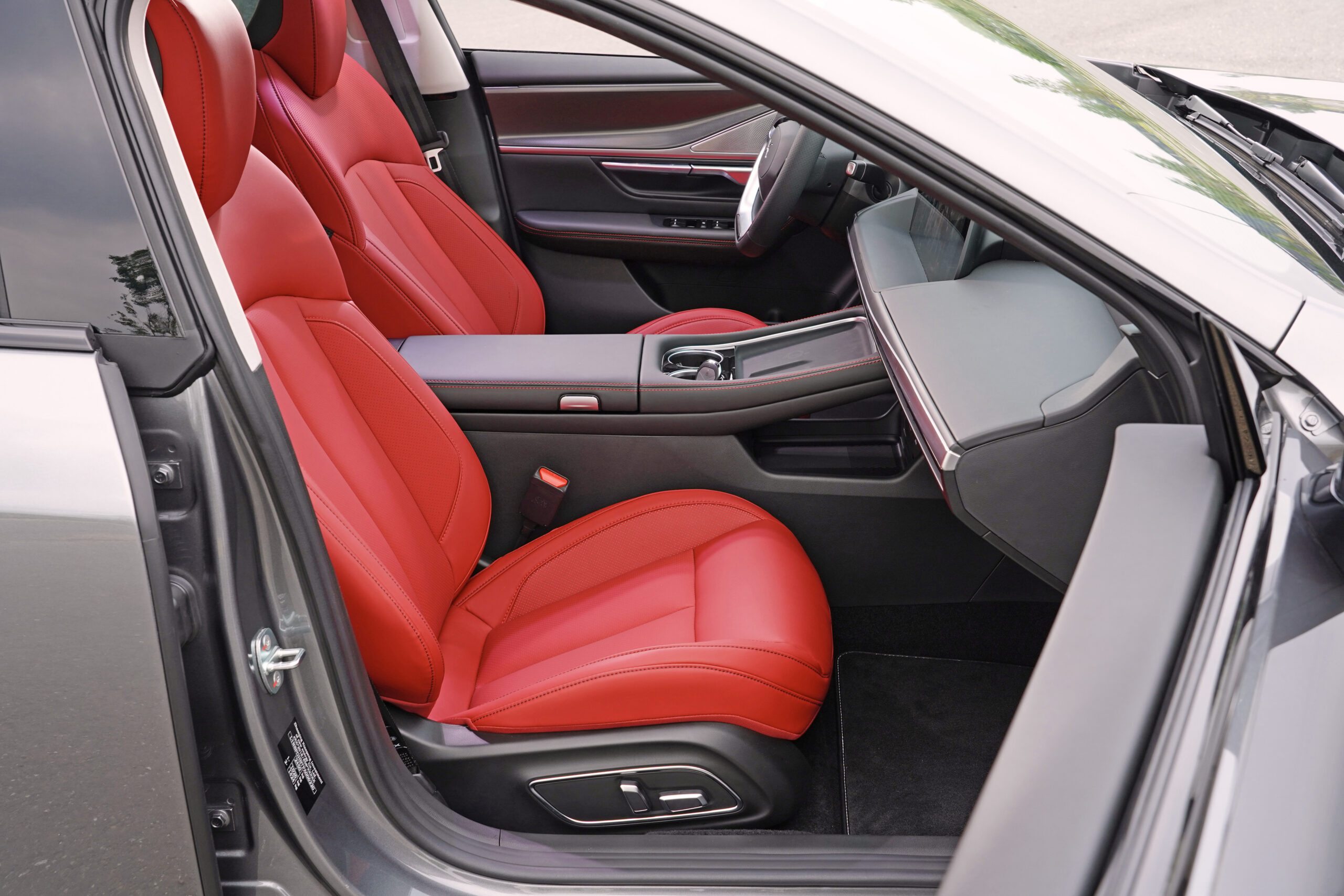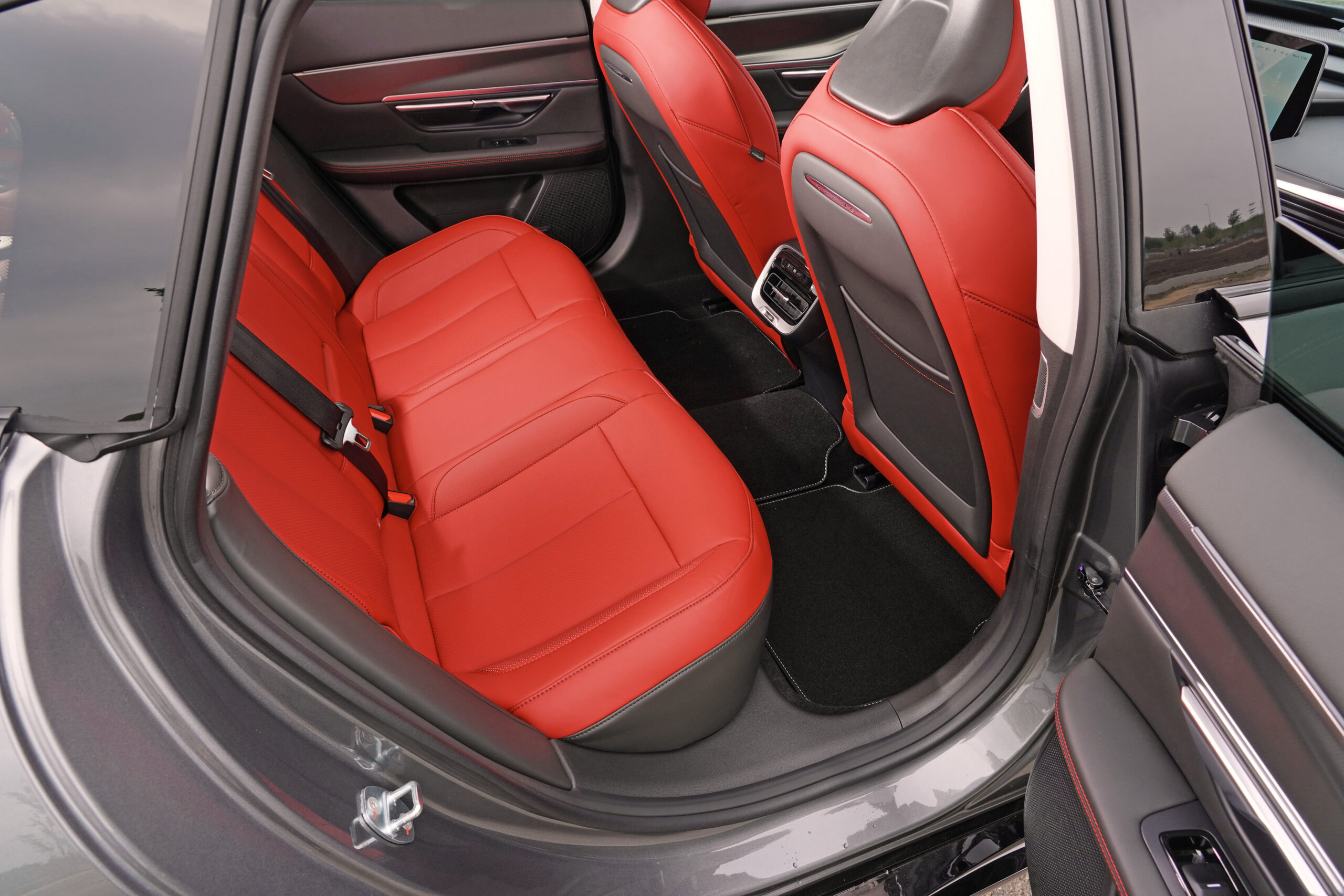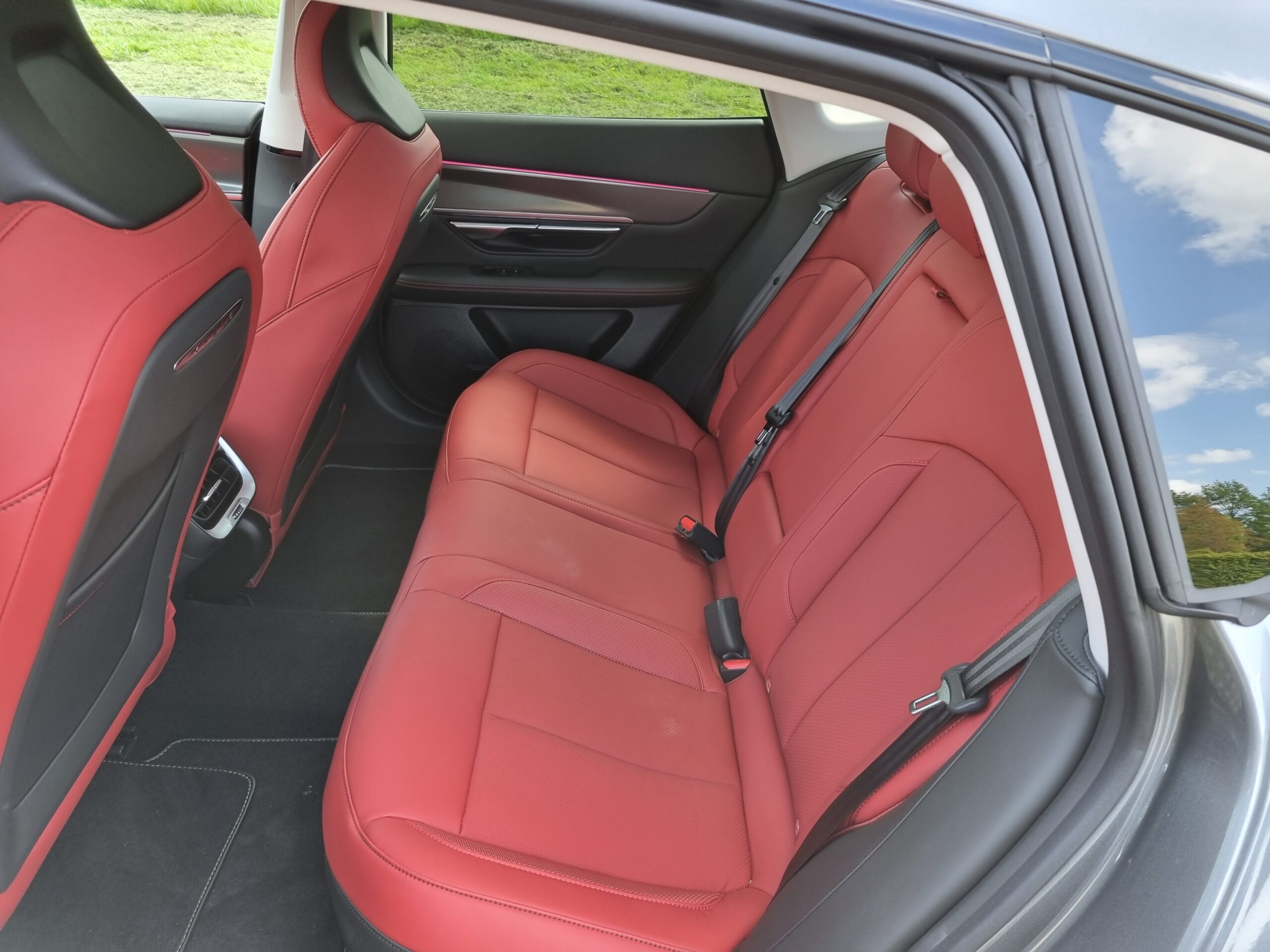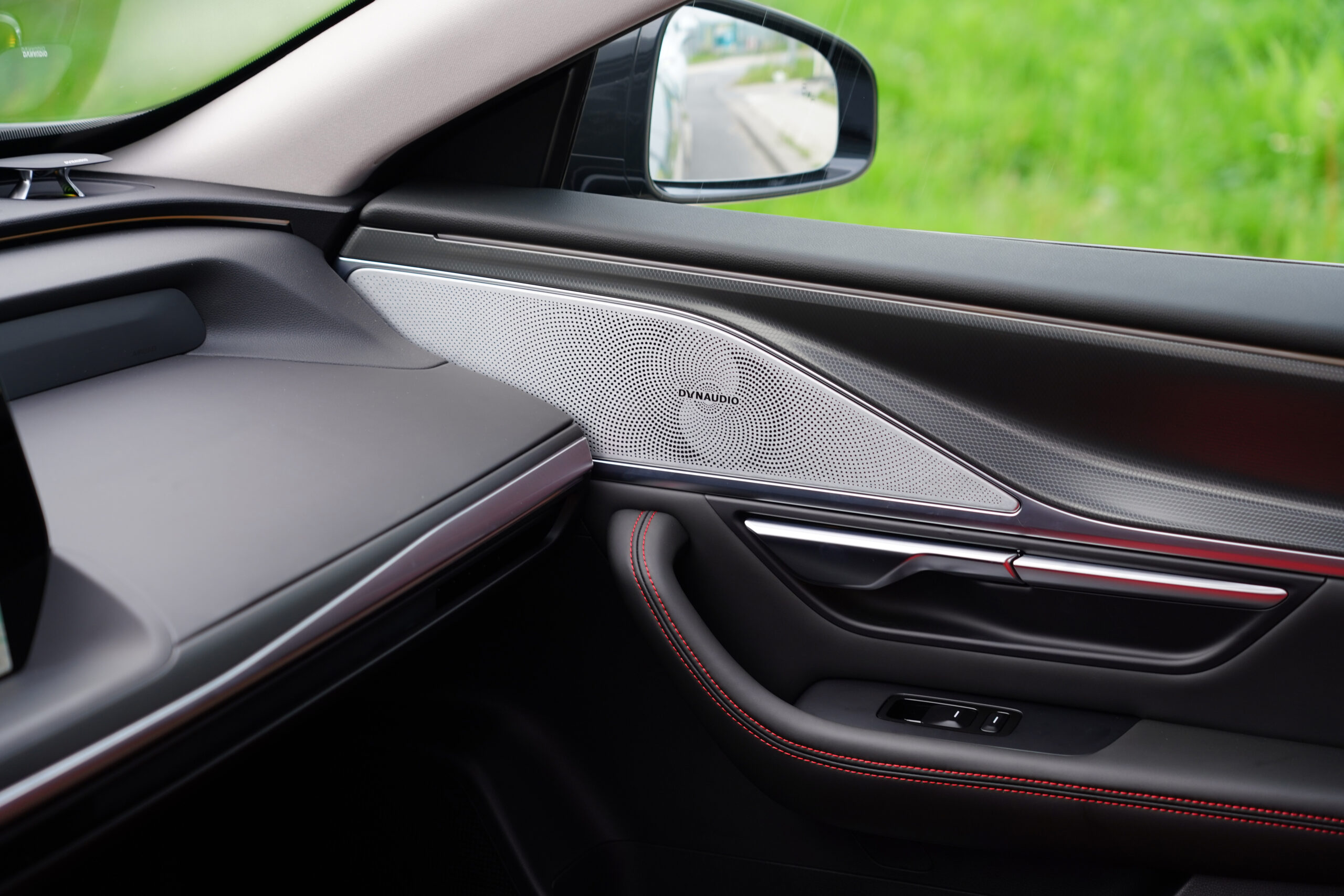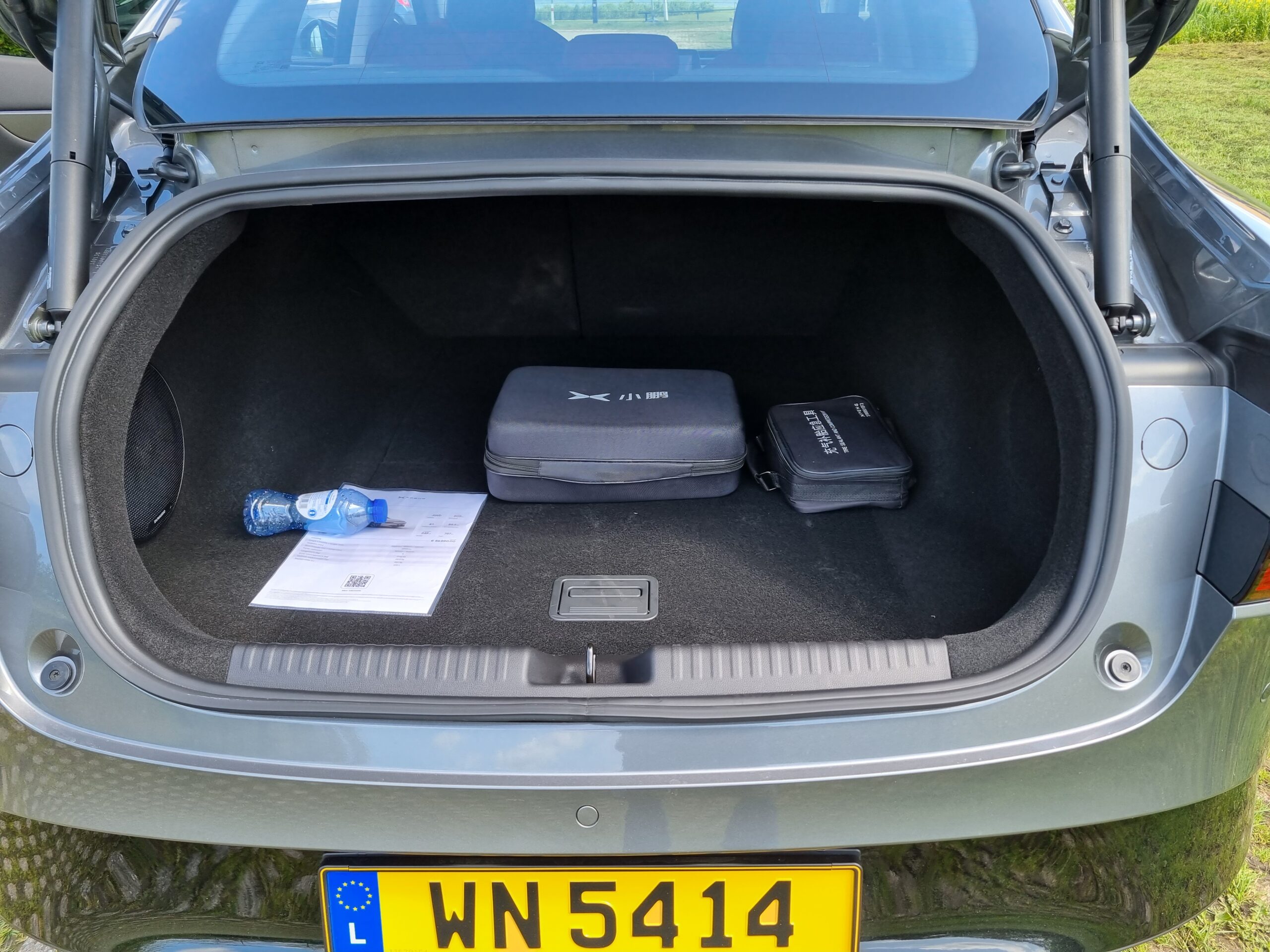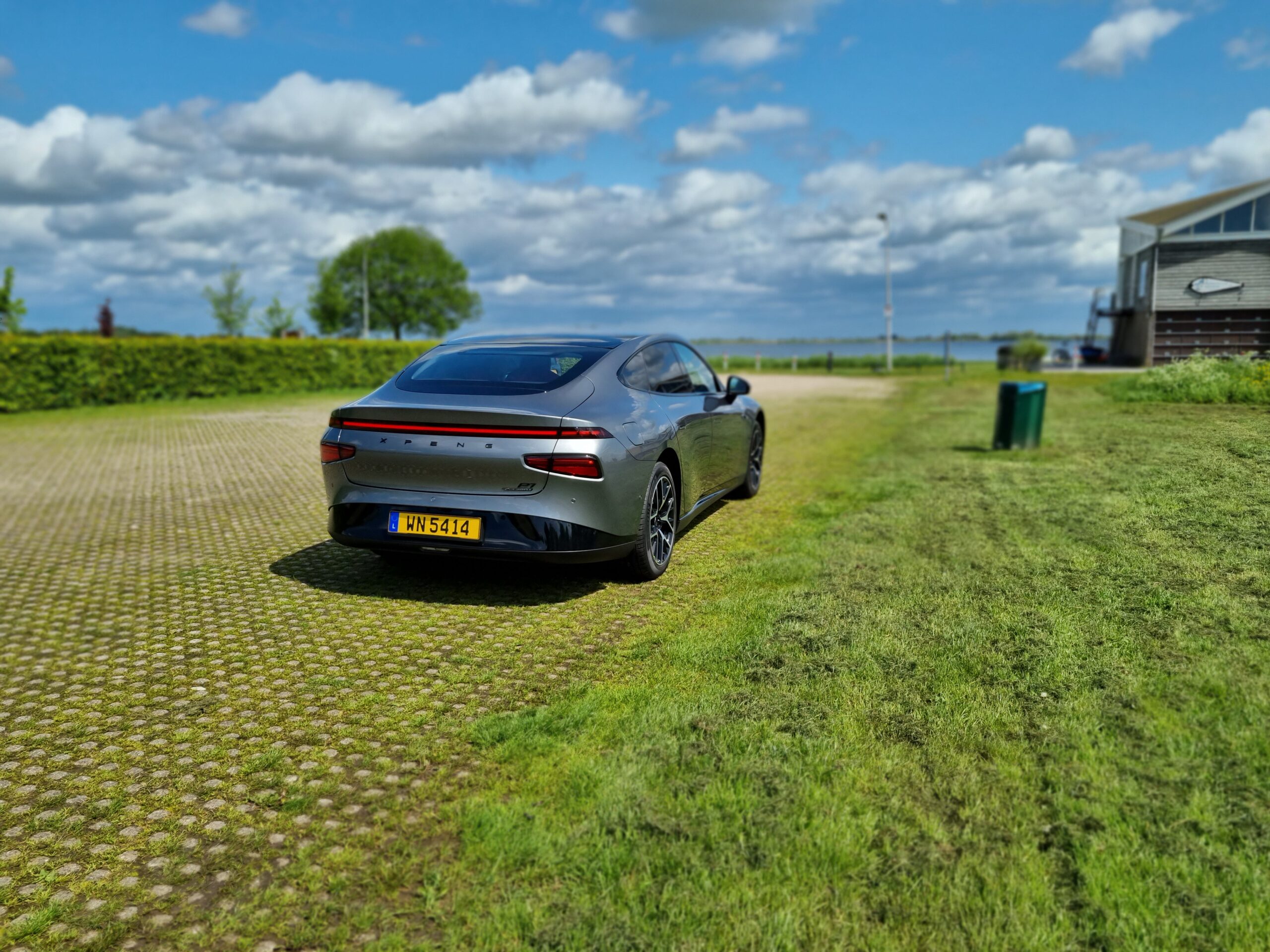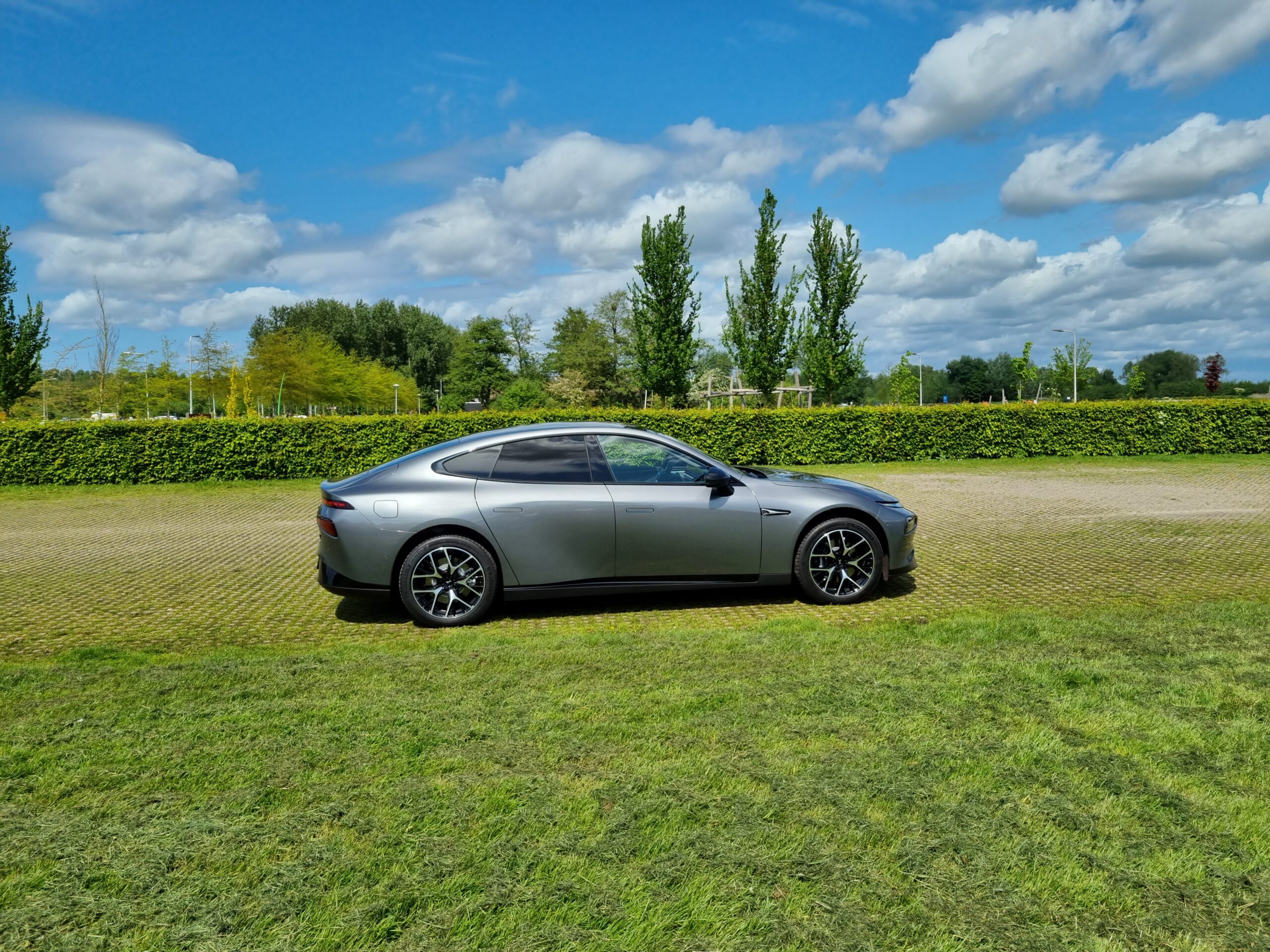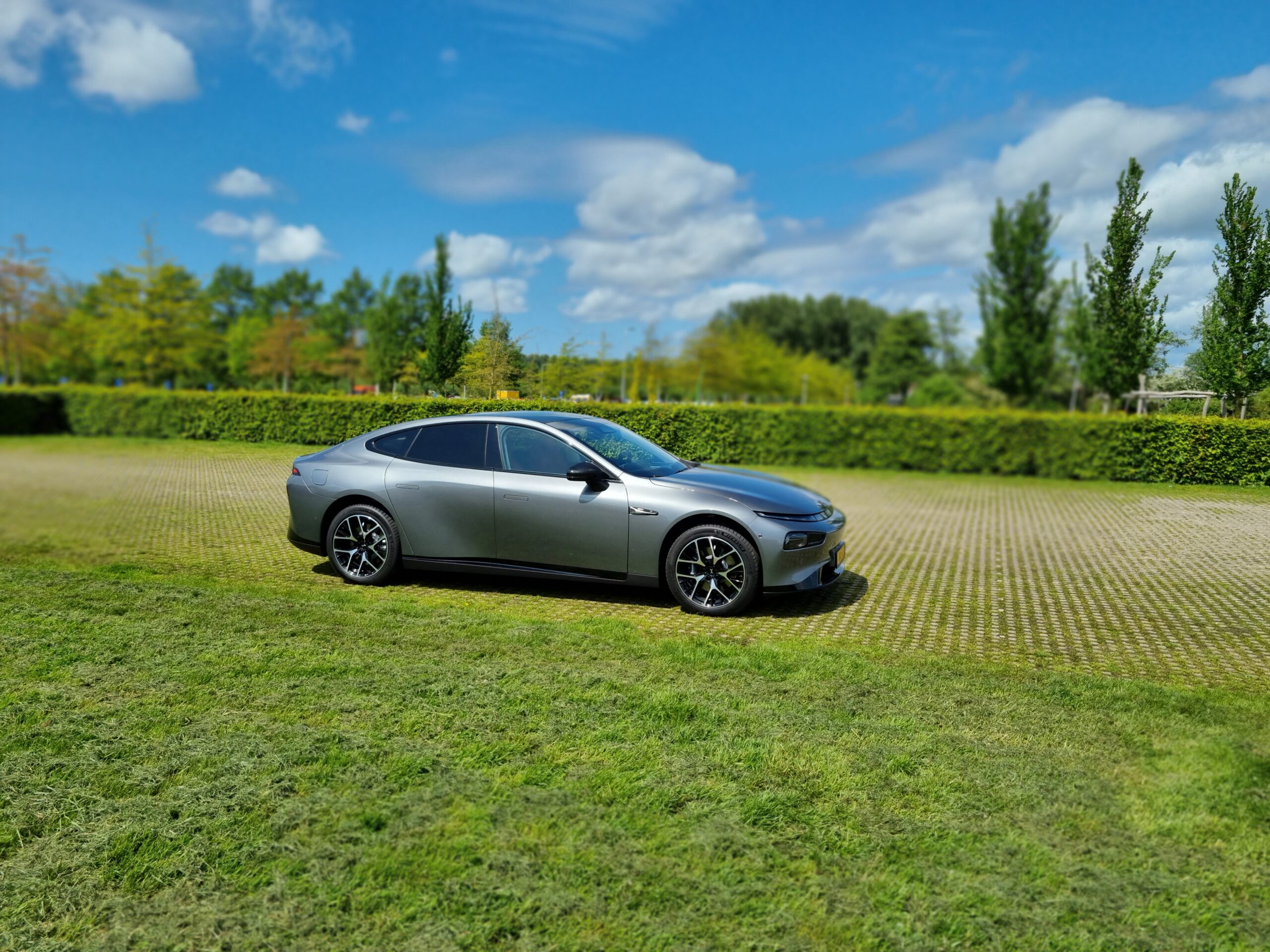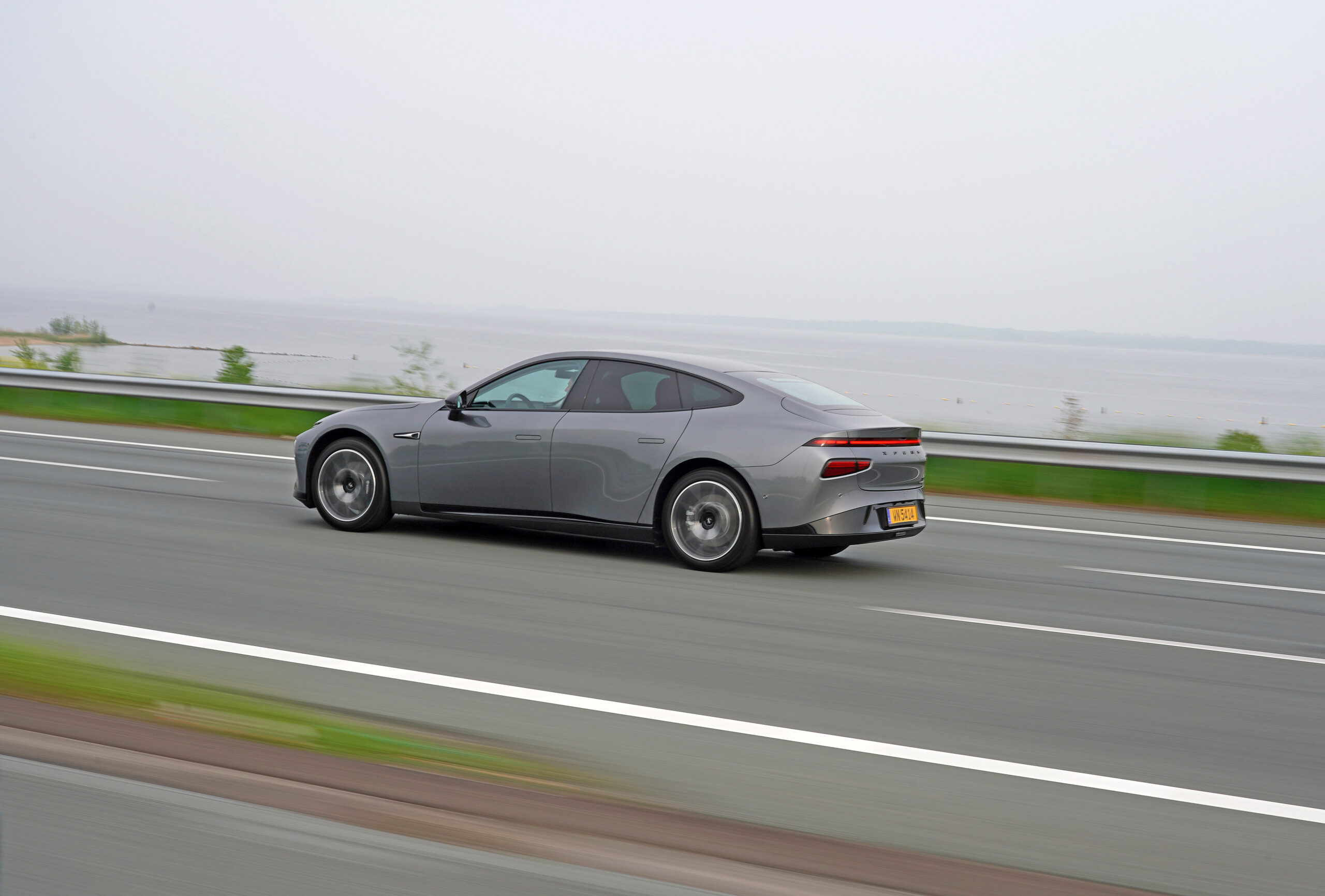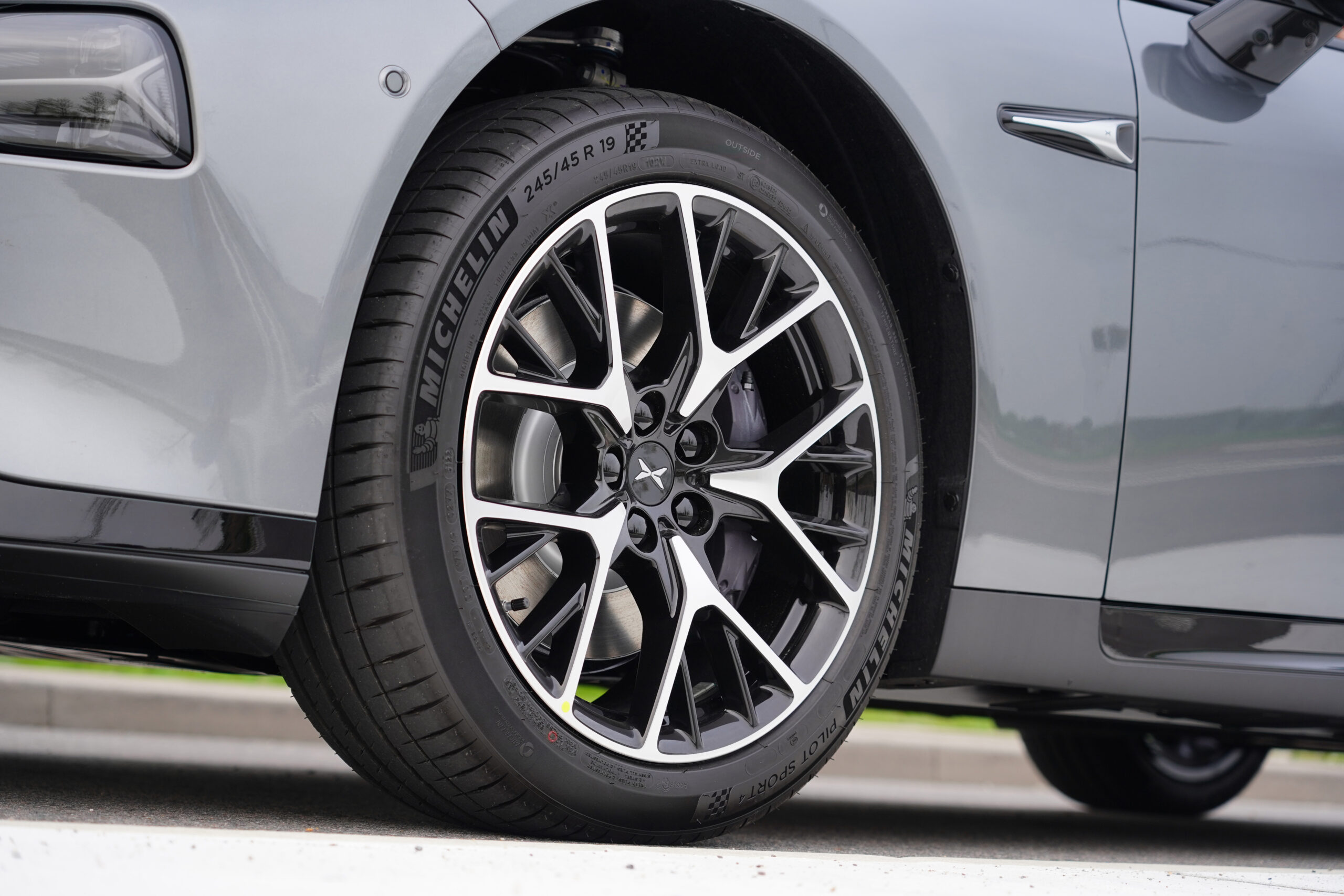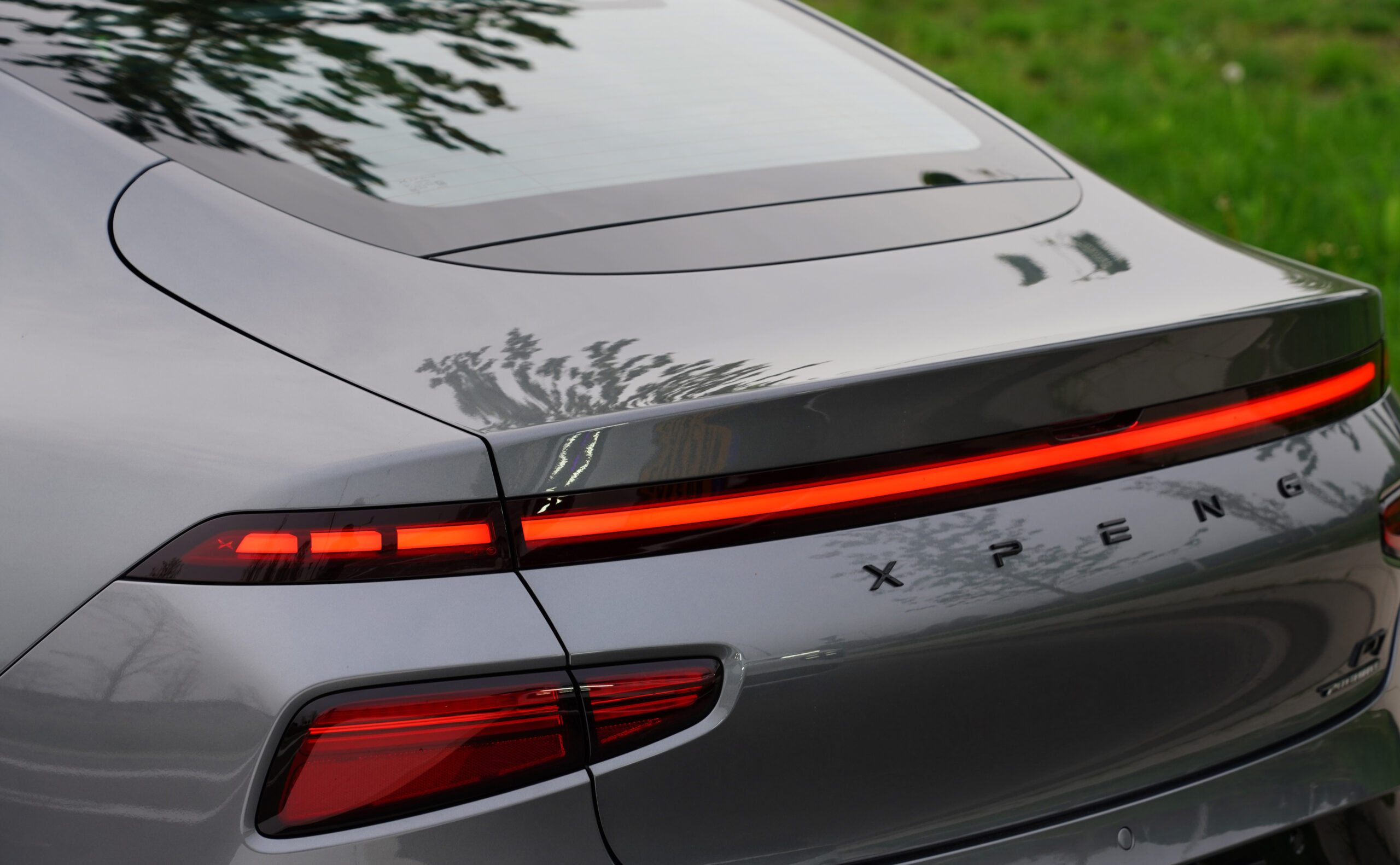
After a year of preparations, XPeng is ready to start deliveries of its vehicles in Europe. Initially, there was a careful start in Norway with the XPeng P7 sedan and the XPeng G9 SUV. Now, Denmark, Germany, the Netherlands, Belgium, and Luxembourg are next. The rest of Europe will follow, but in each country, a sales and service infrastructure must be organized.
To prepare the launch, a number of journalists from these countries were invited to Amsterdam, the European centre of XPeng logistics, to get acquainted with the models for the European markets. XPeng is starting with its top models, the SUV G9 and the sedan P7. The company has smaller models available on the Chinese market as well, and new models on a brand new platform are in development.
XPeng P7 Intro
Like many others, XPeng has decided on a toolbox architecture, like VW’s MEB. It is called the “Smart Electric Platform Architecture,” SEPA2.0. This enables a far greater range of variants than a classic platform with a fixed chassis. The first model on this new platform, the G6 SUV, was shown at the recent Shanghai Auto Show.
What is now offered in Europe are the latest models of the first generation of BEVs designed by the company. Each model did have clear improvements over the previous one. The P7 still has a 400V powertrain architecture, while the G9 is already on 800V. Besides technical differences the driver will hardly notice, a 400V architecture has a practical max charging capacity of 175 kW and an 800V architecture that can charge with 350kW (or even 400kW with some chargers).
The day started for me, after the coffee and tour of the facility, with a test drive of the G9 towards our lunch destination. That review has its own article. After the lunch, a P7 was assigned to me.
Description of the P7
The P7 is a nice, big sedan in the E-segment. It’s too big for my taste, but that is not the car’s fault. It is not only big, with the legroom in the back for a working executive, but also luxurious. The seats have not just heating, but also a massage function. It is of course available to the executive in the back, not just for the chauffeur in the front and the assistant riding shotgun.
As with all modern electric cars, it has a number of driving modes. They are sporty, normal, eco, and one-pedal. The current crop of fully electric cars is so good at driving that there is nothing to test in normal daily traffic. For those who like to know how good it is at taking a corner at speed, visit a race circuit. The capacities are far outside what can be tested on public roads in a safe way.
The distinction nowadays is on the Advanced Driver Assistance Systems (ADAS). The most used are one-pedal-driving and cruise-control. Both should be trimmed to the driver’s taste. Other important features are blind-spot warning, lane keeping assist, driver attention, beside a number of safety features that I hope never to test.
For really testing all the ADAS functions, the test-drive of about 2 hours was too short. I did experience they worked, I did feel it enhanced my safety and made driving easier. But I could not test all or try to tune them to my liking and driving style. I will ask for a longer testing period later this year.
The P7 is offered in three versions. There is a long range version, a performance one, and a WOW, show off, impress the girls/guys version with wing doors. There was not a winged car available for us journalists, and personally I do not see the difference between standard performance and extra performance. Both have more power under the hood than is usable in normal traffic.
Specs at EV-Database.org for the XPeng P7:
- Battery — 82.7 kWh with about 500 km/311 miles of range on a full charge.
- Motor — 202 kW and 440 Nm rear-wheel drive. (Long Range)
- Motor — 348 kW and 757 Nm all-wheel drive. (Winged, Performance)
- Charging — 175 kW DC and 11 kW AC.
- Curb Weight — 2,020 kg / 4,453 lb) Long Range
- Curb Weight — 2,140 kg/4,718 lb Performance
- Curb Weight — 2,180 kg/4,806 lb Winged Performance
- Towing not permitted
- Euro NCAP not yet tested
- Wheelbase (2998mm/118”)
- Length * Width * Height — (4888mm/192”) * (1896mm/74.6”) * (1450mm/57.1”)
Observations about the P7
Let me start with the seats. They are not good; they are great. They are electrically positioned and adjusted in any way the driver or passenger likes. They offer not only heating but also a massage function. It was explained to me as a way to keep me awake while driving, but it would likely put me to sleep. It is very relaxing. The nice color and finish also deserves a mention. The steering wheel can be adjusted with a lever beneath the console, just like nearly every other steering wheel.
Even when doing a test drive, remember to save the configuration of your seat, because the seat will withdraw backwards to make it easier for you to get out of the car. If not saved, you have to position the seat again. Perhaps there is a function to recall the last position, but it is not automatic and I did not look for it.
I did not use the parking assist. Perhaps I should have, because I am becoming terrible at parking, but when parking backwards, the site mirrors reposition downwards to see the street and other cars. Nice touch. I sometimes do it manually, but then I have to put them back again when driving normal.
The back seat head rests block the view in the rear-view mirror just a bit. When overtaking, I use the rearview mirror to check the distance to the car I just passed. Using the site mirrors can make you misjudge the distance, because they are not flat but convex. Perhaps I should have looked for a digital rear view mirror function. With the number of sensors and cameras keeping track of the surroundings of the car, it should be available.
While the rear bench/seats are officially wide enough for three adults, I will invite nobody for a long drive sitting on the center position — at least not with my type of wide body. It is more a bridge between the two seating positions than a third seating position. It is harder and has less leg room and place for your feet.
An executive sitting in the back and having a nap or working is unlikely to complain about the leg room. And the seats are heated just like in the front. The cupholders and USB plugs are what you can expect from a car in this class.
All in all, it’s a great cabin with a great sound system … that I did not test. My ears are not working properly anymore, and without my hearing aids, I have difficulty following a conversation. I love it when it is silent in a car, and the P7 has enough soundproofing to make it comfortable for me. Even half deaf, many cars have too much road and driving noise in the cabin to my liking.
Going all the way to the rear of the car, the trunk was a big as you may expect of a car this size.
When driving, I hardly notice the rest of the cabin, but I am very much in contact with the user interface. With modern electric cars, there is a new way of designing the way drivers interact with the vehicle. There is a big touchscreen, and there are hardly any physical knobs and switches at all. Not the best interface for someone like me who likes to keep his eyes on the road and interact with the car by touch. It becomes worse when you need reading glasses for the screen but can’t have glasses on when driving.
The user interface is not as bad as some modern cars, but I would appreciate more that I can do by touch without the need to look at the screen, deciphering complex menu structures. Not to mention that my old parchment skin is often not noticed by the touchscreen.
Managing a car through a touchscreen is hard. Do not start about getting used to it — I have a car with a touch screen, and touchscreens were the reason I stayed with my Nokia 3310 until having a battery electric car forced me to transition. I now have a Samsung S21 5G top-of-the-line model, not a cheap something with third rate parts, and after over three years with a smartphone, I still think the Nokia 3310 was a better tool to make voice calls.
Good touchscreens are OK when configuring the car when parked and having the manual on your knees. For anything that can (or needs to) be done while driving, I think physical knobs and switches are superior.
And now the ADAS suite:
- Adaptive Cruise Control
- Automatic Speed limiter
- Adaptive Turn Control?
- Forward Distance Monitor
- Forward Collision Warning
- Auto Emergency Braking
- Traffic Sign Recognition
- Speed Assistant System?
- Intelligent High Beam
- Blind Spot Detection
- Active Lane Change
- Lane Coordination Control?
- Lane Departure Warning
- Lane Keep Assist
- Enhanced Lane Keep
- Rear Collision Warning
- Rear Cross Traffic Assist
- Door Open Warning
- Autonomous Parking
- Driver State Monitoring
- Parking assist with 360° camera
I did not test all of these. To be honest, I did not notice or touch most of these.
The driver state monitoring was probably the source of repeated warnings to pay attention to the road, especially when I was concentrated on difficult driving situations. There was a voice commenting on my driving, a sound signal, and my seatbelt was tightened a few times. If I was falling asleep, very effective intervention. In this drive, it was a distraction.
I used adaptive cruise control (ACC) to drive about 100 kilometers on 100 km/h highways and 80 km/h roads. Rush hour was just starting, and many other drivers did not like the relaxed way of driving of the ACC. I think the ACC was configured for a driving environment with a keep-your-lane system. In Europe, we have a keep-to-the-right regulation. This creates different driving habits that were handled sub-optimally.
Lane keep was good. Traffic sign recognition worked, but when there was a speed limit for an off-ramp, it applied it to the main road, warning me I was driving too fast.
All in all, the XPeng P7 is a great car. It needs some tuning to the idiosyncrasies of Dutch (European) driving. But with over-the-air (OTA) updates possible, it will likely get a lot better over time.
For those driving a lot of kilometers professionally, often outside rush hour, the price and range will make this a very attractive car. I can see a lot of taxi companies replacing their Mercedes E-Class diesels (now the most popular cab in some European countries) with this car. The mix of luxury, range, and price is just right. The Mercedes EQE sedan lacks leg room and head room in the rear seats for ideal use as a taxi cab. The EQE SUV does offer more, but is in another price class.
Rereading what I have written, it is very critical and does not reflect my enthusiasm for this car. It is a mistake I sometimes make when discussing the quality, and pros and cons, of a product. Jack Scarlett of Fully Charged voices how I feel about the P7 far better than I can do myself. His video is worth your time.
All images by Maarten Vinkhuyzen or XPeng.
I don’t like paywalls. You don’t like paywalls. Who likes paywalls? Here at CleanTechnica, we implemented a limited paywall for a while, but it always felt wrong — and it was always tough to decide what we should put behind there. In theory, your most exclusive and best content goes behind a paywall. But then fewer people read it! We just don’t like paywalls, and so we’ve decided to ditch ours. Unfortunately, the media business is still a tough, cut-throat business with tiny margins. It’s a never-ending Olympic challenge to stay above water or even perhaps — gasp — grow. So …

